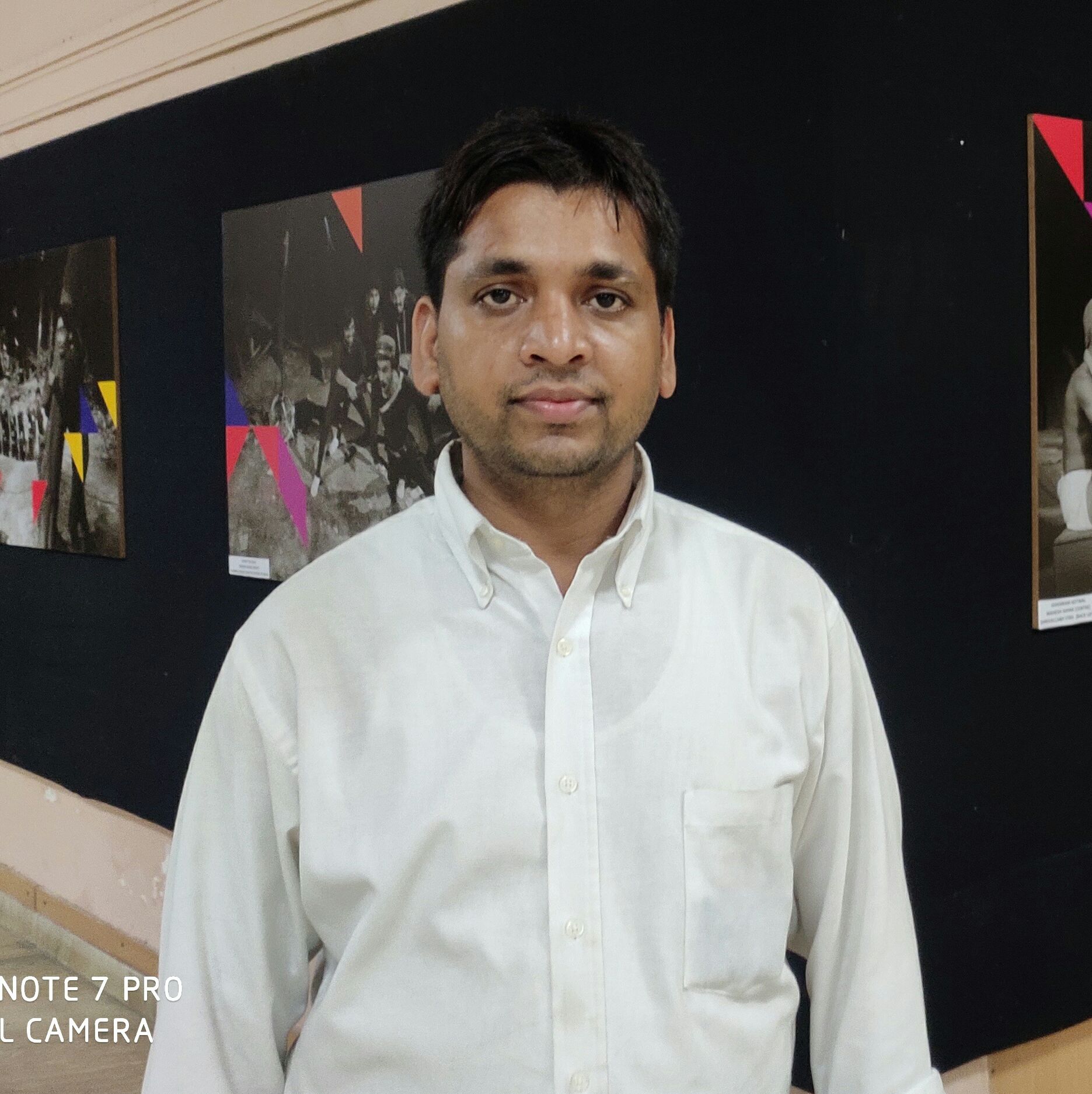Umar Nizar
There is a poignant moment in the i-flux edition brought out by Sage publications, in which the art work titled `Hallelujah Fallujah’ by Anita Dube is `misprinted’ as `Hallelujah Hallelujah’. This is the apotheosis of contemporary art, where a truly radical artistic ploy has been `unconsciously’ or `unintentionally’ reduced to an onomastic caricature with rhyming frills. The political edge of art has actually been blunted by the progressive pretentious of contemporary art.
Contemporary art has come to be a stand in for art that comprises mostly of `installations’. These myriad creations that attempt to channelize the hyper complexity of the contemporary inhabited world and its cosmos, is self-aggrandising and self-undermining at the same time. The self-sufficient nature of art as encapsulated by Kant in his `Critique of Judgement’ appears to be not applicable to contemporary art, which revels in signification without meaning. In that respect, contemporary art attempts to outwit science, which is the reigning deity of the epistemological realm at present.
In the Indian context, the art biennale’s and the hyper mobility of successful Indian artists have created an ecosystem that is conducive to the flourishing of contemporary art, that at the same time is not immune to vagaries of market forces. Thus the Indian elite, has for perhaps the first time since independence, discovered its moorings in the international art market, that has for long been monopolised by Euro America, with the global south joining in only as purveyors of purloined heritage. The post-liberalisation era has ushered in a confident, brash and elitist crowd of Indians that hustle the global art scene in a minor way. The capital-poor ecosystem of Indian economy is no longer a dampener for the ambitious art marketer.
The ethical commitment of Indian contemporary art is called into question by the elaborate ruses by which it calls attention to itself. This could in the older terminology be called `exotic’. The exotic and erotic in the Indian art have been sublimated to the level of ethical preoccupations by the emergence of `contemporary art’ scene in India. The invisible market forces that enunciate the dictate of the global currents on the market are seldom allowed to directly manifest within the Indian context, due to the social hierarchy of caste and communal as well as gender equations that make it difficult to fathom Indic society at any one point of time.
The Kochi-Muziris biennale is a case in point where the attention of the global art market has been captured by the local entrepreneurs, only to be fated with a crashlanding of expectations over the exaggerated notions of self-importance that belied the exotic charm and tropical milieu. Authenticity in Indian art has been a product of exoticization based upon caste and communal segregation, Under the new episteme of contemporary Indian art, such a configuration can be thwarted. But has the ethical commitments of global contemporary art, affected its Indian instantiation, is a big question that remains to be answered. The old regime can very well be resurrected under the guise of progressive universalism that denies the claims of identity that the subalterns in India have established after long and gruelling struggles and sacrifices.
The return of the caste `exotic’ in the global guise of contemporary art involves the capitalist art market and reterritorialization of reactionary and regressive forces in Euro America through the operation of caste, which Isobel Wilkerson has called `the origin of our discontents’. The caste elite reterritorializing what essentially had been exorcized from the collective psyche of Euro America through glacial processes of enlightenment have found their way back through political correctness and reactionary right wing mobilisation that thrives on Islamophobia and hatred towards refugees and minorities.
That contemporary art looks upon society as its ideal target for proliferation of ethical consciousness might have Hegelian underpinnings in a post-Soviet world. The end of history narratives have been thwarted by the emergence of subaltern movements as well as global cataclysms including mass migrations and warfare. The idealised spirit of art, has been infused with the modernist cult of the artist. The self-aggrandising totality of global capital can create the perfect base for a reterritorializing caste to flourish and branch out. The currents of globalisation in the post-modern age and the precarious condition in which a large number of the global population survive have together precipitated unprecedented humanitarian crises that can only be manipulated and not solved using advancements in biological and digital technologies. The control societies in a post-human mould that the contemporary art world would attempt to appropriate and manipulate, can easily dispel ethical or moral qualms using the Nietzchean philosophical edifice and the anti-humanist vision of entitlement in the global north.
Megalomania of self-aggrandising art can very well be predicated upon the ability of control systems to replicated, morph and transmogrify so as to map themselves on to a multi-ethnic, multi-gender and multi-modal world. The inchoate post-cold war world systems potential can threaten the nascent movements for global justice and peace. The hegemony of the global art bourgeois and its intellectual bulwark, can find in the Indic caste bourgeois, its perfect counterpart. Ethical philosophers like Martha Nussbaum have already done so without much difficulty or compunction. The global market for contemporary indian art cannot aspire to shape the polity of India. Yet the superstructure of contemporary culture and its digital and technological underpinnings can very well produce a realm of inequality and self-justification that could prove difficult to undo in the long term.
That the Indic consciousness has come a long way from Buddhist and Gandhi thought post-Gujarat riots, is proven by the crises in the Indian art world and the intellectual incongruity between Indic and western societies even on an ideational level. Thus the superficial art spectacles mounted by elite galleries, museums and art biennales can construct a new regime of inequality in South Asia. The irremediable loss of the Indic spirit in the material profusion of art, is something to be pondered about.
Conventionally the Indic ecosystem has been saturated with meaning, whereas the western spiritual realm was comparatively sparse. Thus meaning in the occidental context was often parasitical upon the eastern traditions. From Buddha to Gandhi, the orient created meaning on a colossal scale that could be consumed globally. The post-liberalizaton opening of markets and the currents of free trade have brought southward, the crisis of signification from the global north whereas the excess of meaning from the orient have not migrated to the occident, which has found in science, the perfect antidote to that very crisis. The proliferation of epistemological frames and meaning making possibilities post-enlightenment have placed the nations of Euro American on a privileged pedestal from where the lagging temporalities of the south could be psychologically manipulated into deference. The absent meaning in the west has been substituted by scientific reason and method that can produce meaning at its whim. The `object correlative’, a term used by TS Eliot, in criticism, has become factual and not just poetic reality, so much so that the scientist of today only has to apply his/her method in order to produce meaning. The structure of the epistemological machine performs its rigorous task. The very machine of epistemological production via method, has ran into the `desert sands’ of `vernacular’ modernity in the Indian context. Once during an interaction in Delhi, the Nobel laureate Amartya Sen was asked by a student something that could be paraphrased as `the tenability of a system that is built upon a pile of garbage’. Sen’s answer was somewhat ironical cheeky and it went something like `one should never attempt to build anything on a pile of garbage’. But that very pile of garbage of modernist vanity has turned `ethical’ as well as `self conscious’ in contemporary art.
~~~
Umar Nizarudeen is with the University of Calicut, India. He has a PhD in Bhakti Studies from the Centre for English Studies in JNU, New Delhi. His poems and articles have been published in Vayavya, Muse India, Culture Cafe Journal of the British Library, The Hindu, The New Indian Express, The Bombay Review, The Madras Courier, FemAsia, Sabrang India, India Gazette London, Ibex Press Year’s Best Selection, and also broadcast by the All India Radio










